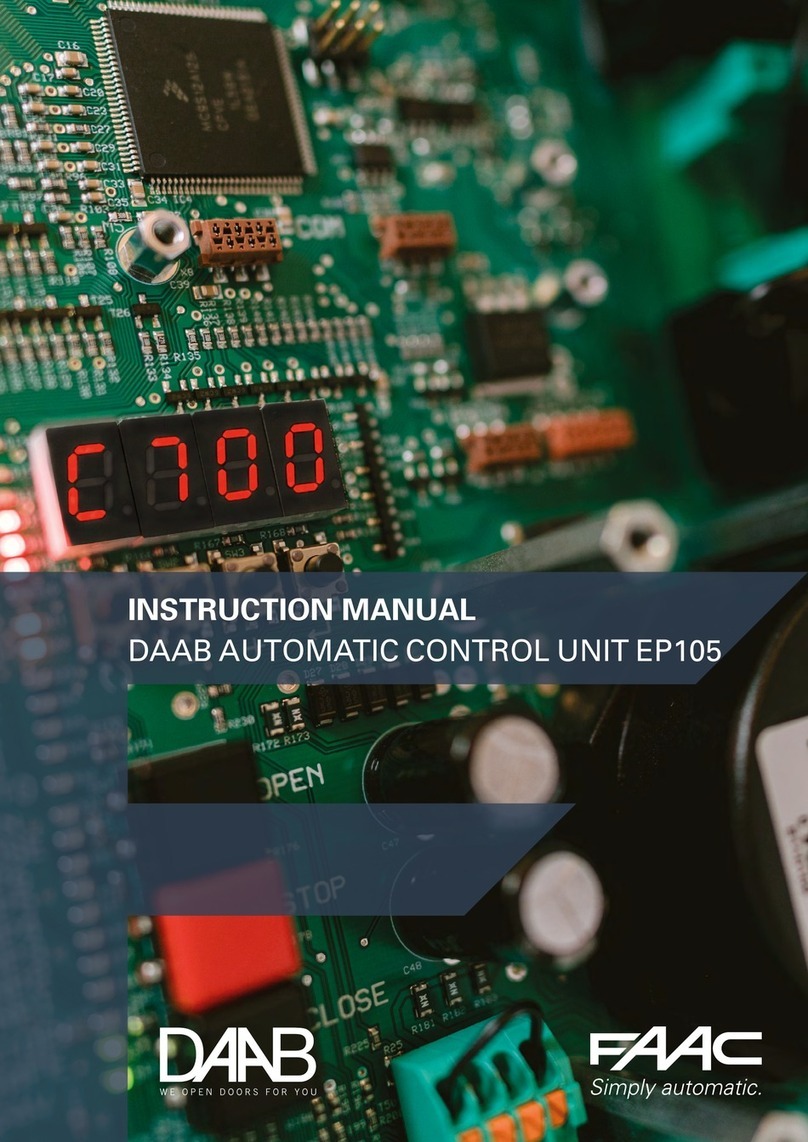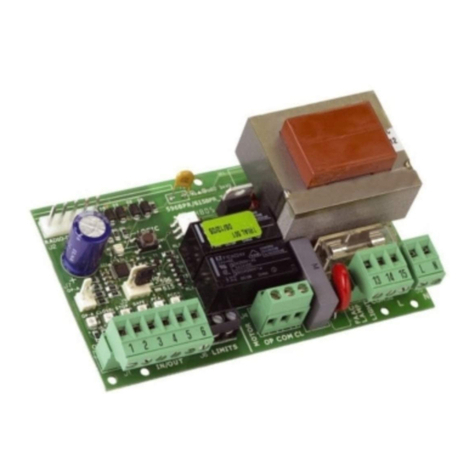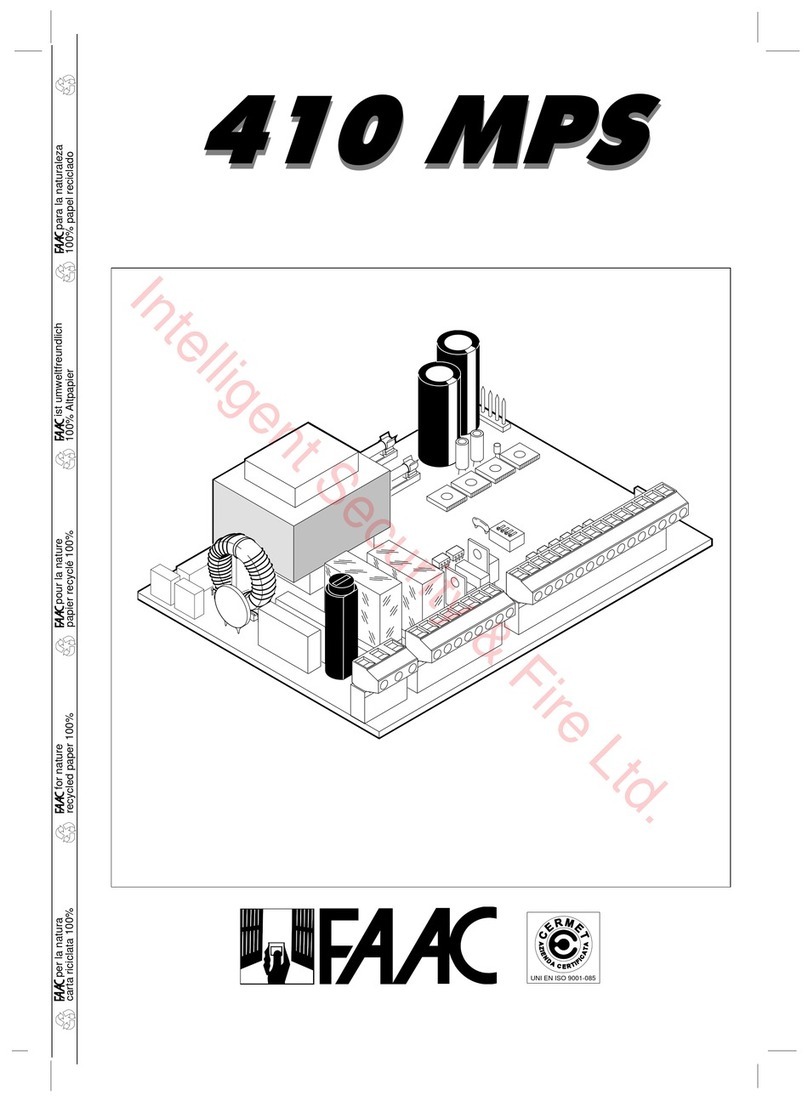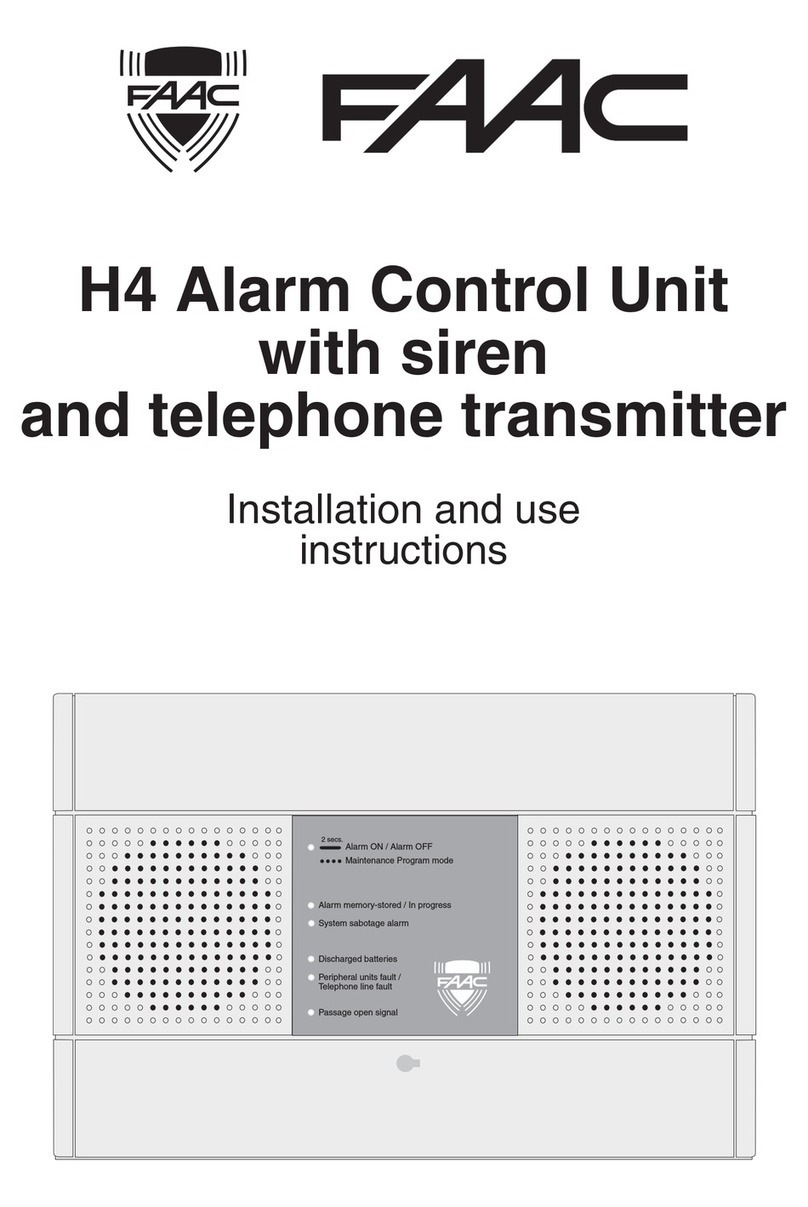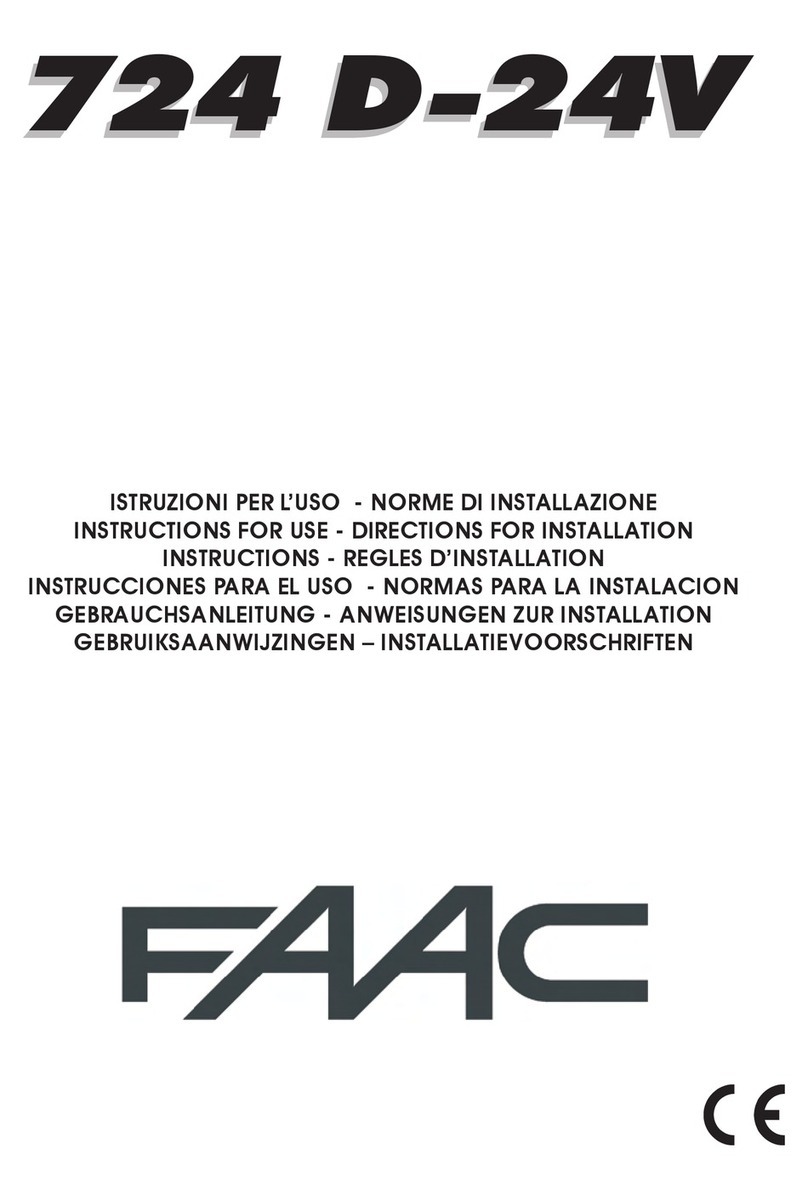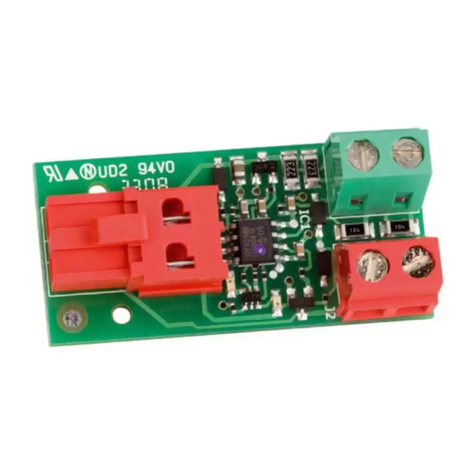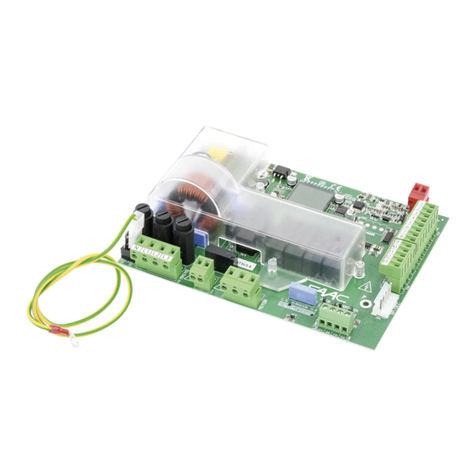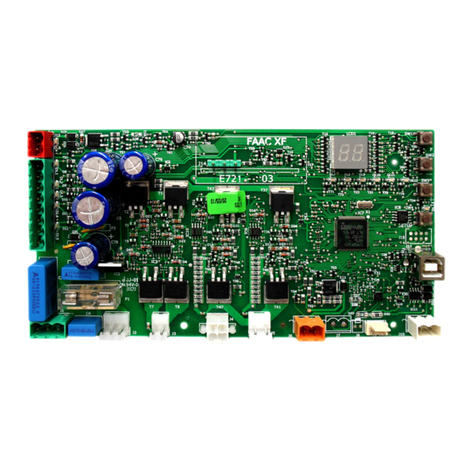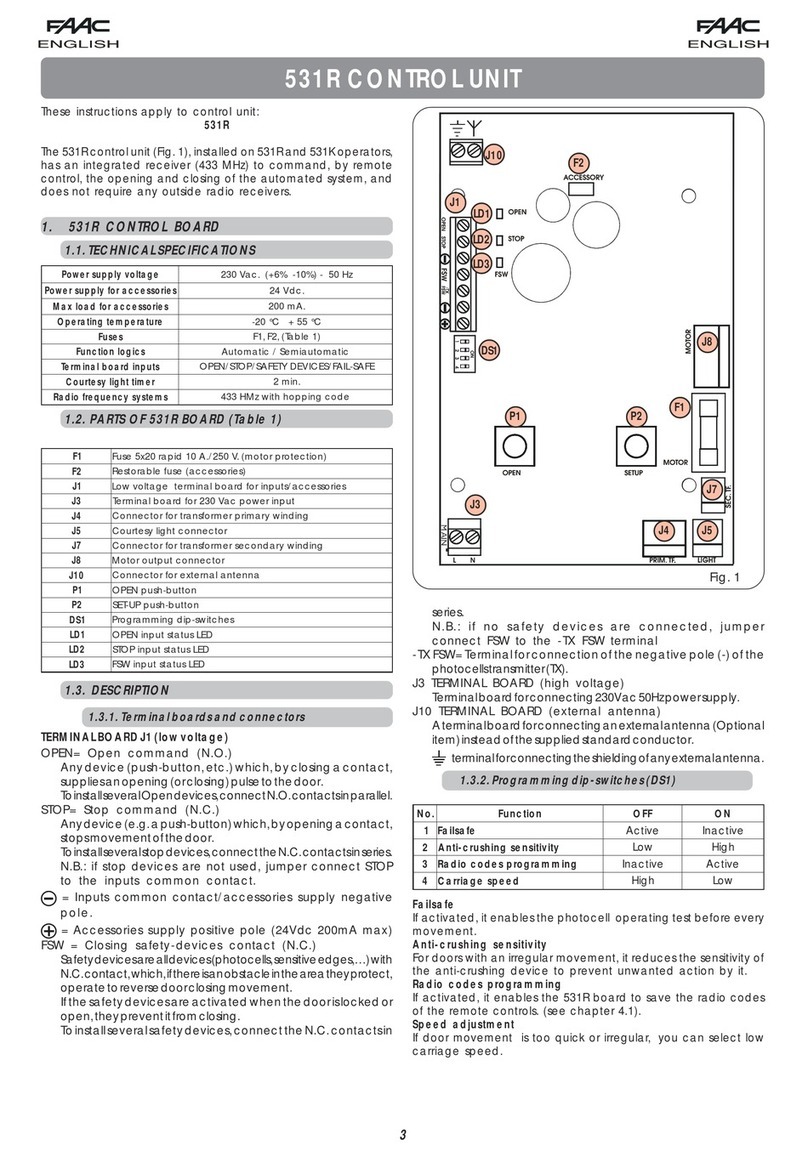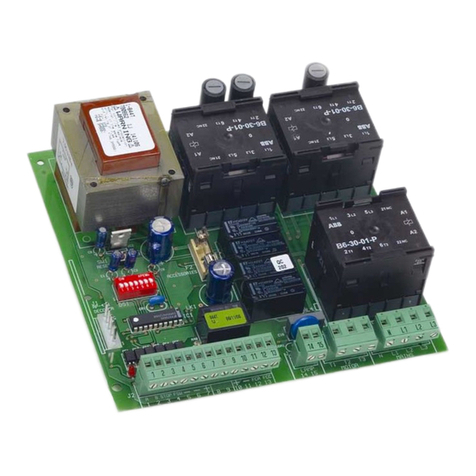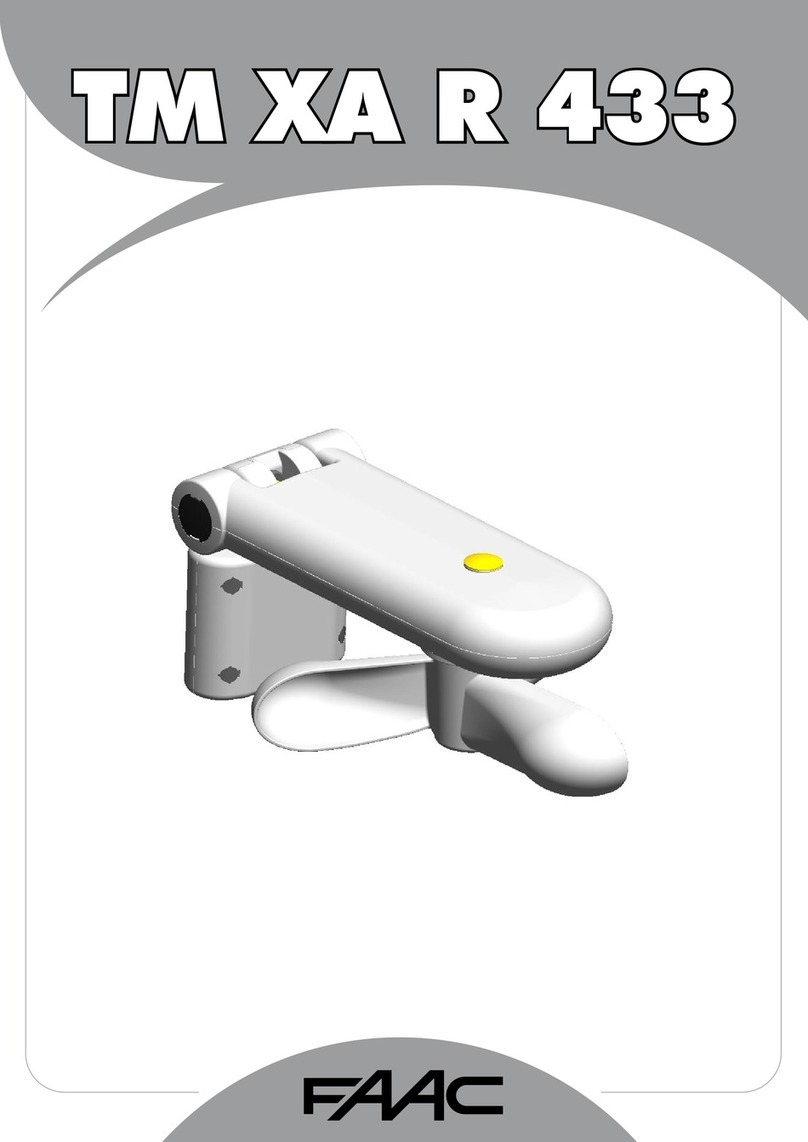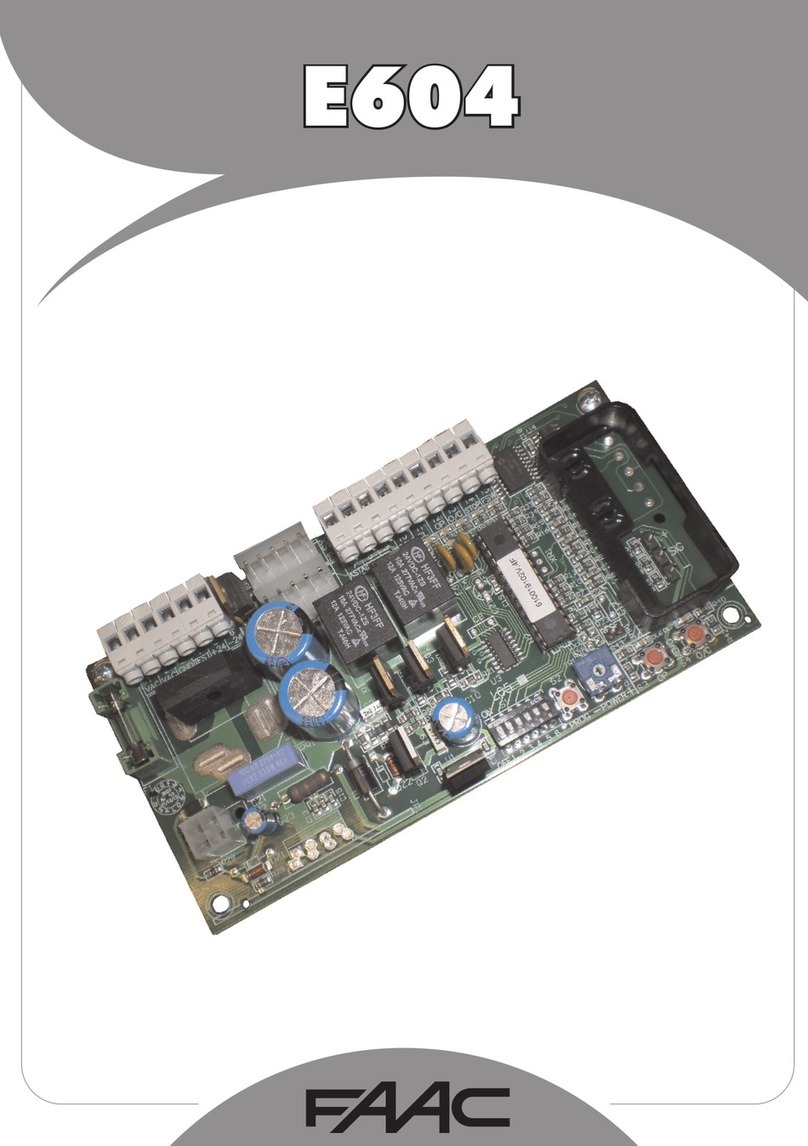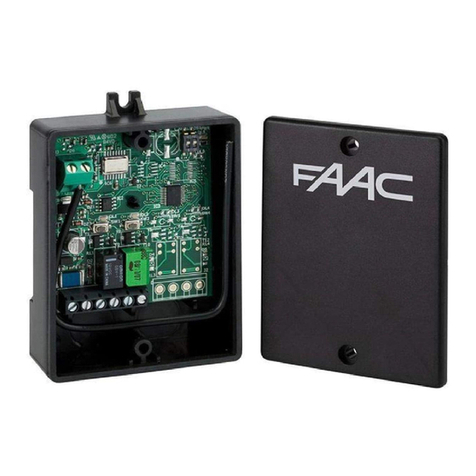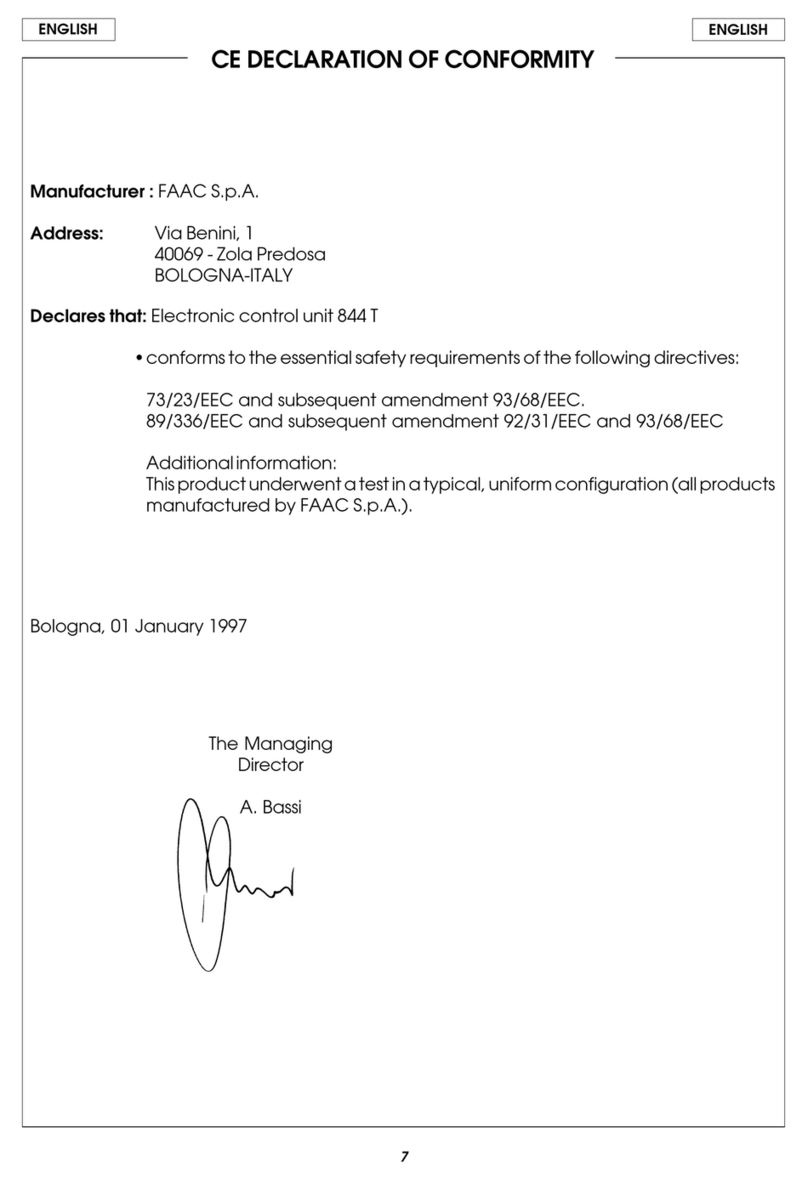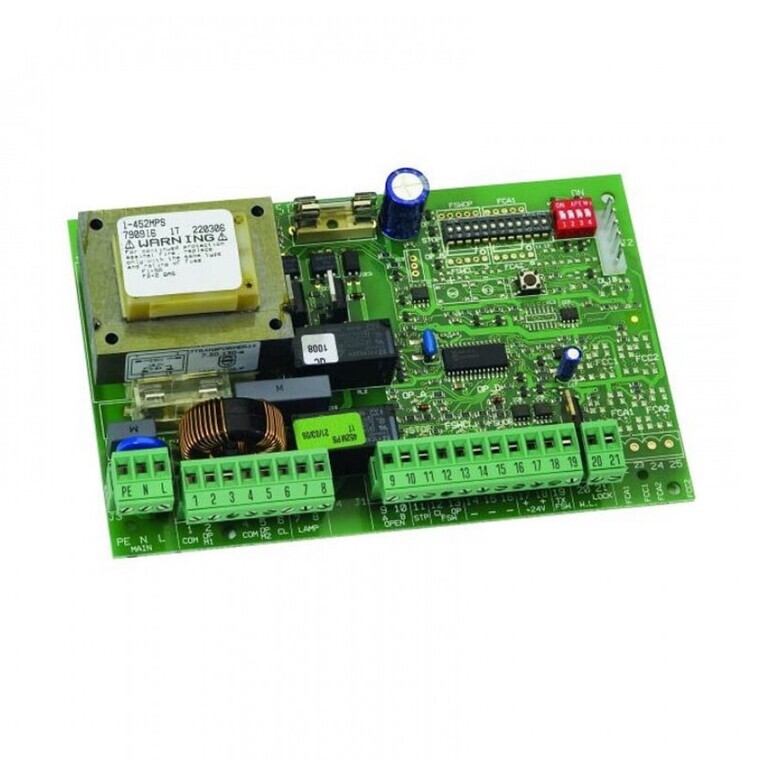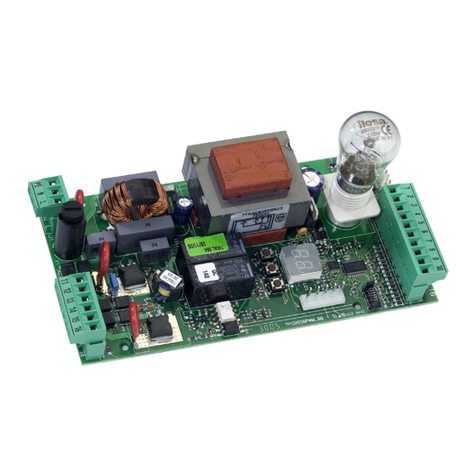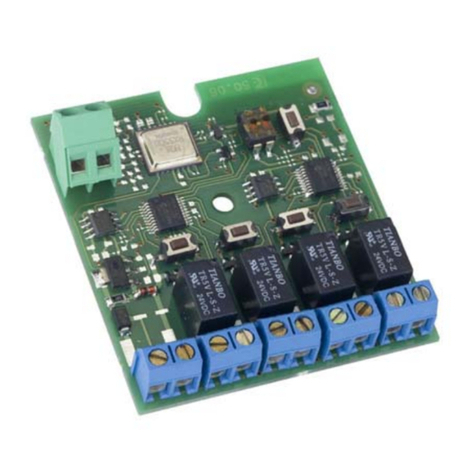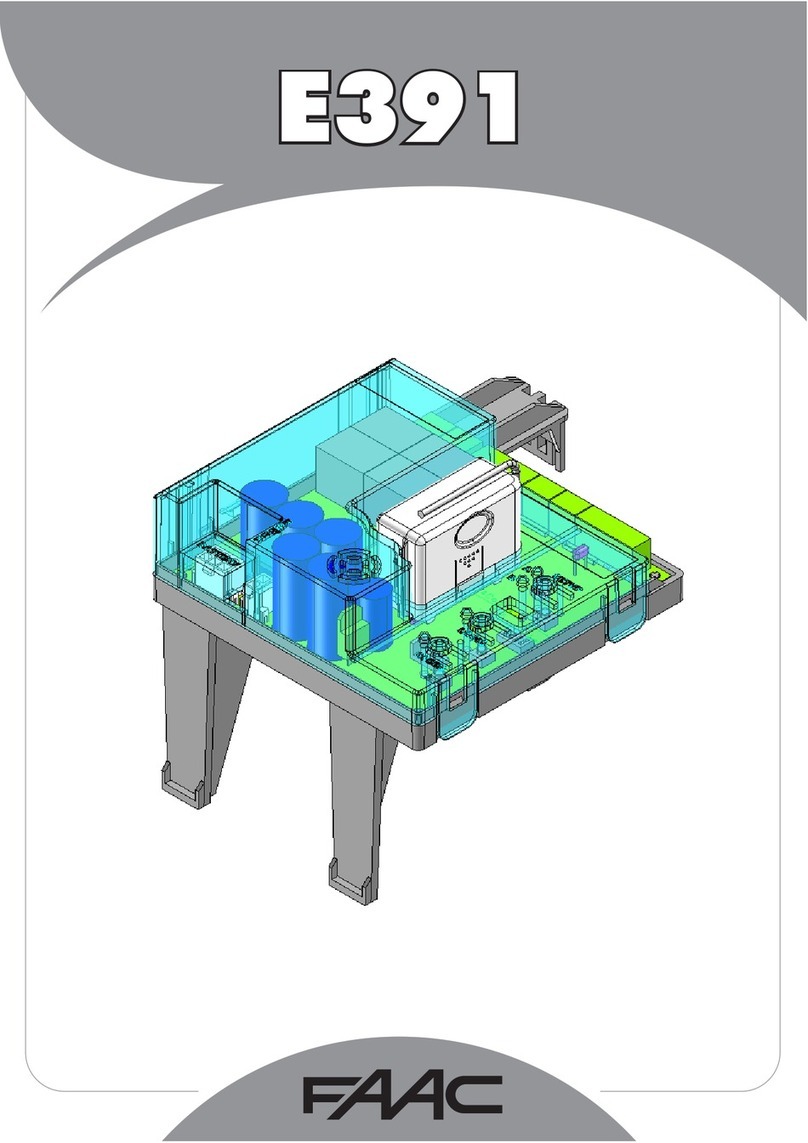
8
Display Function Default
o4 OUTPUT 4:
See output 1
, except to functions 00, 11 ,
12
that in this case have not effect.
02
P4
OUTPUT 4 POLARITY:
for configuring the output polarity status.
Y
= N.C. polarity
n o
= N.O. polarity
no
AS
ASSISTANCE REQUEST (coupled to the
next two functions):
If activated at the end of the count-down
(settable with the next two functions under
“Cycle programming”), it activates LAMP
output for 4 sec every 30 sec. (assistan-
ce request). Can be useful for setting
scheduled maintenance
Y= Active
no = Excluded
no
nc
CYCLE PROGRAMMING IN THOUSANDS:
For setting a count-down of the system
operating cycles. Settable value from 0to 99
(thousands of cycles). The displayed value is
reset as the cycles progress, interacting with
the n C value (99 n c decrementing steps
correspond to one n C decrement).
The function can be used combined with
n C , to check the use of the system and to
make use of the “Assistance request”.
00
n C
CYCLE PROGRAMMING IN HUNDREDS OF
THOUSANDS:
For setting a count-down of the system
operating cycles. Settable value from 0
to 99 (hundreds of thousands of cycles).
The displayed value is reset as the cycles
progress, interacting with the n c value
(1 decrement of n C corresponds to 99
decrements of n c ).
The function can be used combined with
n c to check the use of the system and to
make use of the “Assistance request”.
0 1
h 1 NO EFFECT oo
h 2 NO EFFECT oo
S t AUTOMATED SYSTEM STATUS:
Exit from programming, storage of data
and return to gate status view (see par.
5.1.).
To access 3rd LEVEL PROGRAMMING, press push-button Fand, while holding
it down, press push-button +for about 10 seconds:
• if you release the push-button +, the display shows the name
of the first function.
• if you also release the push-button F, the display shows the value
of the function, which can be changed with keys +and -.
• if you press the push-button F(and hold it down), the display
shows the name of the next function; if you release it, the
values is shown and can be modified with keys +and -.
• when you reach the last function, press the push-button F
to exit programming, and the display resumes showing the
inputs status.
The following table indicates the sequence of functions accessible in 3rd
LEVEL PROGRAMMING:
3rd LEVEL PROGRAMMING 10sec
Display Function Default
/ setting
0 1
If you enable this function, automatic closure
occurs after pause time.
.
Y
= automatic
closure
no
= disables
02
If you enable this function, operation is with
two different inputs: OPEN for opening and
CLOSE for closing
Y
= operation
on two inputs
no
= disables
03
Activation of recognition of input levels OPEN
and CLOSE (command maintained), i.e. the
board recognises the level (e.g. with OPEN
maintained and STOP pressed, when the
latter is released, the automated system
continues to open). If
03
is disabled, the
board commands a manoeuvre only if the
input is varied.
Y
= recognition
of input level
no
= recognition
of input variation
04
Activation of DEAD MAN opening (command
always pressed). If the OPEN command is
released, operation is stopped.
Y
= enables
no
= disables
05
If you enable this function, an OPEN command
during opening stops the movement.
If parameter
06
is
no
the system is ready for
opening
If parameter
06
is
Y
the system is ready for
closing
Y
= OPEN at
opening stops
movement
no
= disables
06
If you enable this function, an OPEN command
during opening reverses movement.
If parameters
05
and
06
are
no
, OPEN has no
effect during opening
Y
= OPEN
at opening
reverses
no
= disables
07
If you enable this function, an OPEN command
during the pause stops operation
If parameters
07
and
08
are
no
, OPEN
recharges pause time
Y
= OPEN during
pause stops
movement
no
= disables
08
If you enable this function, an OPEN command
during the pause causes closure
If parameters
07
and
08
are
no
, OPEN
recharges pause time.
Y
= OPEN in
pause closes
no
= disables
09
If you enable this function, an OPEN command
during closure, stops operation, otherwise it
reverses movement.
Y
= stops
movement
no
= reverses
10
DEAD MAN closing enabled (command always
pressed). If you release the CLOSE command,
operation is stopped.
Y
= enables
no
= disables
1 1
If you enable this function, a CLOSE command
has priority over OPEN, otherwise OPEN has
priority over CLOSE.
Y
= enables
no
= disables
12
If you enable this function, a CLOSE command
commands closure when it is released.
Until CLOSE is enabled, the unit remains in
closure pre-flashing.
Y
= CLOSE
closes when
released
no
= CLOSE
closes at once
13
If you enable this function, a CLOSE command
during opening stops operation, otherwise
the CLOSE command commands reversing
immediately or at end of opening (also see
parameter
14
)
Y
= CLOSE stops
movement
no
= CLOSE
reverses
14
If you enable this function, and if parameter
13
is
no
, the CLOSE command commands
immediate closure at end of opening cycle
(memory stores CLOSE)
If parameters
13
and
14
are
no
, CLOSE
commands immediate closure.
Y
= immediate
closure at end of
opening
no
= immediate
closure
15
If you enable this function, when the system
is stopped by a STOP, a subsequent OPEN
command moves in the opposite direction.
If parameter
15
is
no
it always closes.
Y
= OPEN moves
in opposite
direction
no
= OPEN
always closes
16
If you enable this function, during closing, the
CLOSING SAFETY DEVICES stop movement
and allow resumption of movement when
disengaged, otherwise they immediately
reverse at opening.
Y
= closure at
disengagement
no
= immediate
reversing
5.3. 3rd LEVEL PROGRAMMING
ENGLISH












